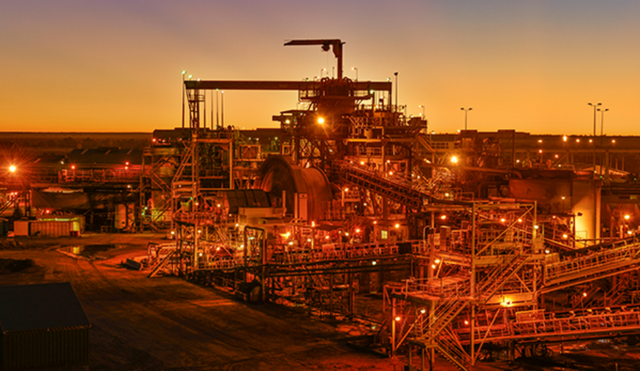
Cannington Mine is a fly-in fly-out mine and processing operation. Cannington first opened in the late nineteen nineties and has since become the world’s largest and lowest cost, producer of silver and lead.
Cannington Mine is located about eight hundred kilometres south-west of Townsville, which is two hundred and fifty kilometres south-east of Mt Isa. In nineteen eighty-nine after a detailed aerial magnetic survey was conducted, it was found that there was a significant deposit of silver, lead, zinc and magnetite. The processes of surveying and sampling then continued and the mine was commissioned in nineteen ninety-seven. However it was not until two years later in nineteen ninety-nine that the mine had full production under way.
There are four types of minerals at Cannington, silver, lead, zinc and magnetite (which is a magnetic mineral). However only silver, lead and zinc are officially mined. Cannington is an underground mine which is accessed through a decline ramp from the surface. Cannington mine uses methods of underground mining, to extract its ore, the main one being long hole open stope mining. Underground mining is done when the ore body is too deep beneath the surface or when using a different mining technique, such open-cut mining would destroy the surrounding surface land too much.
The type of underground mining used, called open-stope mining is done when there are large amounts of ore underground. However open stope mining can only be performed when the rock surrounding the ore is strong enough to support itself, without caving in after all the drilling, blasting and removal of ore has taken place. Once the ore is broken it is collected at the bottom of each stope by large trucks and hauled to the surface.
After all the ore has been collected from the stopes, the empty holes would then be filled with backfill. Backfill is usually a cheap cement mixture, and provides a support frame so the mine does not collapse, and that adjacent ore bodies can then be mined. Excavation involved drilling holes about two metres in diameter and then hoisting the ore back to the surface ready to be processed. The hoisting shaft used is six hundred and fifty metres deep and can bring ore to the surface at twelve metres per second.
Cannington mine has a mineral processing concentrator, which is where the mined ore is taken. The purpose of the machine is to separate the valuable minerals, containing silver, lead and zinc from the rest ore known as gangue. The saleable products are then sold to various smelters in Australia and overseas.
~ Thanks for Reading ~
Check out my other posts @benzene
Interesting post. Do you work there @benzene? I've been on site at a few mines, I sell furnaces to the quality labs and some other analytical chemistry equipment.
Downvoting a post can decrease pending rewards and make it less visible. Common reasons:
Submit
No I don't work there, although it would be an interesting place to work. I remember researching mines a while back and thought I'd do a write up today.
Downvoting a post can decrease pending rewards and make it less visible. Common reasons:
Submit
this is great information I read for the first time
thank you
Downvoting a post can decrease pending rewards and make it less visible. Common reasons:
Submit
Congratulations @benzene! You have completed some achievement on Steemit and have been rewarded with new badge(s) :
Click on any badge to view your Board of Honor.
To support your work, I also upvoted your post!
For more information about SteemitBoard, click here
If you no longer want to receive notifications, reply to this comment with the word
STOPDo not miss the last announcement from @steemitboard!
Downvoting a post can decrease pending rewards and make it less visible. Common reasons:
Submit